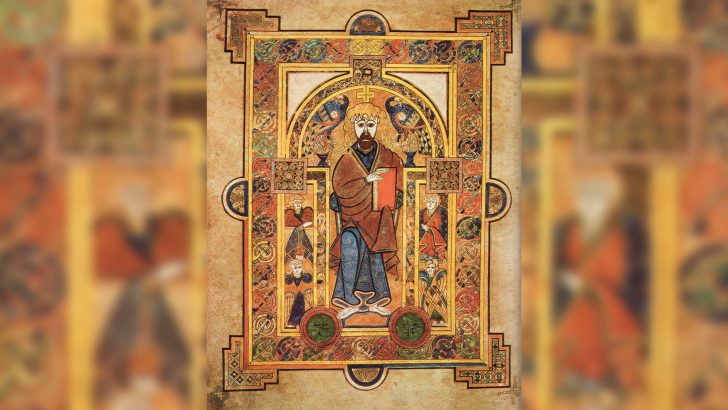Image & Vision: Reflecting with the Books of Kells by Rosemary Power (Veritas, €24.99/£22.00)
Rosemary Power has written two earlier books on the world of Celtic Christianity, one of which deals with Colmcille and Iona. She also lectures widely on themes in this area of scholarship to non-academic audiences, thus passing on the latest aspects of current research. Her new book derives naturally enough from her talks on the Book of Kells, which may have been created on Iona, and she proves a very enlightening guide for those wishing to seriously explore one of Ireland’s greatest treasures.
Invaders
Gerald de Barri, whose family were among the leading Norman invaders, described in the 1180s a book very similar to the Book of Kells, whose illuminations were just as remarkable, as “the work of angels”, and that is a very appropriate idea to encompass the beauty of the pages.
The author herself remarks towards the end of her text. “Today we have the advantage of being able to read the gospels in a language of our choice, as well as to view this work directly or in reproduction. This has made the Book of Kells accessible in a way our ancestors could not have envisaged. As with any other great work, or collections of works of art, our modern interpretations also have their place, especially when informed by the past.”
Today the Book of Kells, once enshrined in Iona and in Kells, where it seems to have been on occasional display, is kept in the library of Trinity College Dublin, where is it seen annually by many thousands of visitors. However, having stood on many occasions among these thronging crowds, and listened to their puzzled comments, it is quite clear that tourists from North America and Asia are very unclear about the nature of what they are seeing. Rosemary Power’s book will be a great aid to many who have enjoyed the brief sight of one opening of a verso and recto page which is all they will glimpse in a darkly shaded room.
Encounter
The exhibition that accompanies this brief encounter is excellent, explaining in a straightforward way the cultural background to the book, and the mysteries of the text and about how the book was made, and the pages created. This is really worth a visit.
Image & Vision will fill out the visitor experience from a Christian point of view. However it contains only 12 images of the highly ornate ‘carpet’ pages. Some readers may well feel that they would also need to see more images, not perhaps in the full-sized facsimile editions, which are very expensive, but one of the many pamphlets which concentrate on the images.
The images used here are backed up by photographs of some of the high crosses associated with the themes she enlarges upon.
In reading Rosemary Power’s book though, I think that many readers might benefit from reading the last chapter ‘Connection and Composition’ as a continuation of the introduction for it explains a great deal which would inform even a first reading.
The text itself is divided into three parts reflecting the layout of the manuscript. ‘The Season’ deals with the stages of the life and passion of Jesus Christ which the Book of Kells sees not as separate texts, but as a total, with constant visual and textual references between the four gospels.
The second section, ‘Entering the text’, deals with the link between the canon tables and the evangelists, and the start of Luke’s Gospel.
But the section called ‘Portraits’ which follows expounds the often hidden aspects of the surviving portraits of the evangelists that open their respective gospels.
The last of the portraits is about the image of Mary and her son, picking up a Marian theme which will certainly greatly interest some readers.
The heart of both Ms Power’s richly detailed text and the manuscript is perhaps the portrayal of Christ himself on folio 32v (pictured). This is certainly among the great iconic works of art in the Western tradition, the divine Christ paralleling the page showing Mary with the very human infant Jesus.
This is a book to be warmly welcomed, and hopefully it will be widely read. There are certainly a lot of new things to be learned from it which help to make that far distant era of faith a living experience.


 Peter Costello
Peter Costello The Virgin Mary and the infant Jesus.
The Virgin Mary and the infant Jesus. 